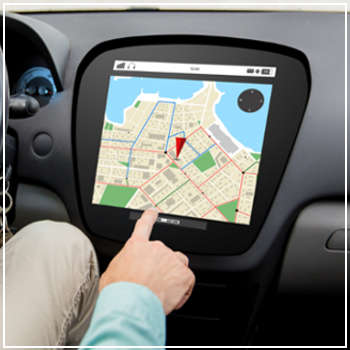Yet, industry experts still estimate that self-driving cars will be sold to consumers and hit the road over the next five years. Further, by 2035, it’s believed that 54 million vehicles on the road will be driverless. By 2050, every car and truck will have this functionality by default.
On one hand, driverless cars have several major benefits. For instance, they improve independent mobility for individuals who can’t drive. They’re also less likely to idle, which reduces emissions and lessens the environmental impact of cars. Thirdly, they’re somewhat safer for drivers who are tired or tend to be distracted behind the wheel. The computer controlling the car is incapable of human distraction, which can cut down on driver-at-fault accidents.
However, along with these benefits of driverless cars come several potential dangers:
Accidents During the Transition Period
 Analysts tracking the development of self-driving cars talk about a transition period – a time, likely over several years, when these vehicles will be on the road with standard driven cars. Amidst the predictions is a higher accident risk for conventional cars. The recent Tesla accident, in which a self-driving car plowed into a tractor trailer because it couldn’t distinguish the truck’s white sides from the sky, exemplifies this risk. A study conducted by Sivak and Schoettle found that these vehicles can’t always avoid collisions not typically caused by a driver’s behavior.
Analysts tracking the development of self-driving cars talk about a transition period – a time, likely over several years, when these vehicles will be on the road with standard driven cars. Amidst the predictions is a higher accident risk for conventional cars. The recent Tesla accident, in which a self-driving car plowed into a tractor trailer because it couldn’t distinguish the truck’s white sides from the sky, exemplifies this risk. A study conducted by Sivak and Schoettle found that these vehicles can’t always avoid collisions not typically caused by a driver’s behavior.
Hacking
Many actions of self-driving cars stem from a computer telling it how to move. But, like with many computerized devices, hacking risks are always a possibility. Once it’s compromised:
- A hacker could access your personal data, including whether or not you’re at home. This can lead that individual to break into and burglarize your property.
- Intentional traffic jams involving multiple hacked cars could result, leaving major roads immobilized for extended periods and creating large-scale chaos.
- It could be used as a weapon, either re-programmed to go after obstacles or behaving like an explosive.
Not All Accident Risks are Eliminated
While a self-driving car might stop you from rear-ending another driver, it still has a few serious accident risks:
- Driverless cars aren’t prepared to stop for jaywalking pedestrians.
- They might not sense when another motorist isn’t obeying the rules of the road.
- It has potential for both computer and physical defects.
- They’re not suited for all weather conditions. Particularly, for existing models, heavy rain can damage the laser sensor mounted onto the car’s roof, disabling a crucial part of its operation.
Minimized Driver Interaction
The type of blinder-like behavior many individuals have when staring at their smartphones could spread from the sidewalk to the roads. In the process, drivers may become used to not making eye contact with other motorists. As a result, are less alert to the scene around them.
Further, the experience acquired through education and year’s driving still has to be replicated by a self-driving car. Currently, models don’t factor in:
- The knowledge an experienced driver has for handling the roads in a range of conditions, including going slower in the rain and giving motorcycles more space.
- Individual states’ driving laws, such as when it’s legal to turn right on red.
- Handling road blocks.
- Routes not included on a GPS system, which is how self-driving cars currently navigate roads.
Different Education
Right now, aspiring motorists of all ages have to go through a driver’s education course that includes learning the rules of the road and spending time in a car with an instructor. However, there’s no mandate for operating a self-driving car’s computer system. Thus, there’s potential for a driver unfamiliar with how this new car operates to get on the road and wreck havoc. Years down the line, essential “traditional” driving education may be phased out, leaving motorists without a basic understanding of the rules of the road.
No matter the type of vehicle driven, you may still find yourself the victim of a damage-causing collision, dealing with an insurance company that doesn’t want to pay. If you’re in this situation, turn to Trantolo & Trantolo’s Connecticut car accident lawyers. If you believe you have a claim, contact any of our locations today.


